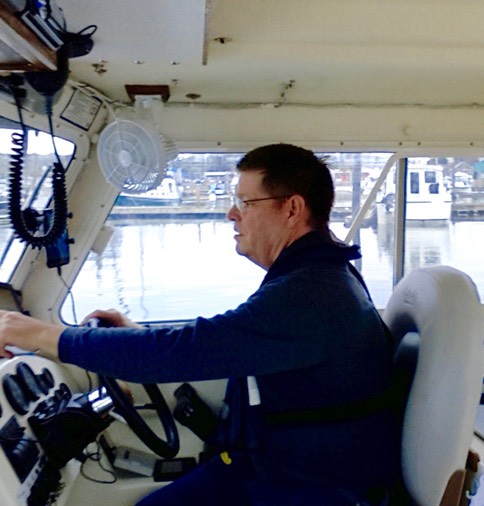
Dr. Bumgarner was born and raised in Illinois. After graduating from high school in St. Charles, Illinois and briefly considering professional bowling as a career, he came to his senses and attended Elgin Community College were he completed his Associate of Sciences degree in 1980 (and had the good fortune to meet his wife Joyce). He then attended Eastern Illinois University were he completed a B.S. and M.S. in chemistry in 1982 and 1984 respectively. His primary interests at the time were high-resolution molecular spectroscopy and quantum mechanics, and his M.S. thesis was entitled "Microwave Spectrum of Propyne-HF".
Roger left Eastern Illinois University to pursue a Ph.D. in chemistry at the University of Arizona in Tucson. His Ph.D. work was focused on high-resolution spectroscopy of weakly-bound complexes - i.e. measurements of small molecules sticking to one another. During his Ph.D., he learned a great deal about developing computer-interfaced instrumentation, quantum mechanics and computer programming. In 1987, at the University of Arizona, he received the prestigious Carl S. Marvel Fellowship, an award given to one chemistry student each year in their final year of study.
After completing his Ph.D. in 1988, Dr. Bumgarner received a Bantrell Postdoctoral Fellowship award from the California Institute of Technology. At Caltech, Dr. Bumgarner worked in the Department of Geology and Planetary Science in the laboratory of Geoffrey Blake. There he developed a new planar jet microwave spectroscopy system, and along with Dr. Blake, built a tunable far infrared laser for studying weakly-bound complexes. It was at Caltech that he first became interested in biology after meeting a scientist (Dr. Mike Harrington) in Dr. Leroy Hood's group through the Caltech baby-sitting co-op.
This chance meeting led to collaboration in pursuit of a time-resolved fluorescence detection approach for proteins on nylon and nitrocellulose membranes. Ultimately, this led to accepting a position in Dr. Leroy Hood's group, the focus of which was to develop a new technology for DNA sequencing and genotyping. Shortly after joining Dr. Hood's group, the entire lab moved to the University of Washington in 1992 establishing the new Department of Molecular Biotechnology (MBT). In MBT, Dr. Bumgarner helped to develop the SAGA genotyping system now sold by LiCor Biotechnology, managed Dr. Hood's sequencing group for 1-2 years, and established both macro and microarray technologies in the lab.
In 1998, he accepted a position as Research Assistant Professor in the Department of Microbiology at the University of Washington. Since that time, he has established his own research group, created and directed the UW Center for Expression Arrays, co-developed a number of bioinformatics tools and algorithms and has been promoted to Associate Professor. His current research focusses on compartive genomics of human pathogens. When he’s not at work, Roger spends as much time as possible fishing for salmon and tuna off the coast of Washington.